Chief Wellness Officers Share Their Stories at CENTILE Conference
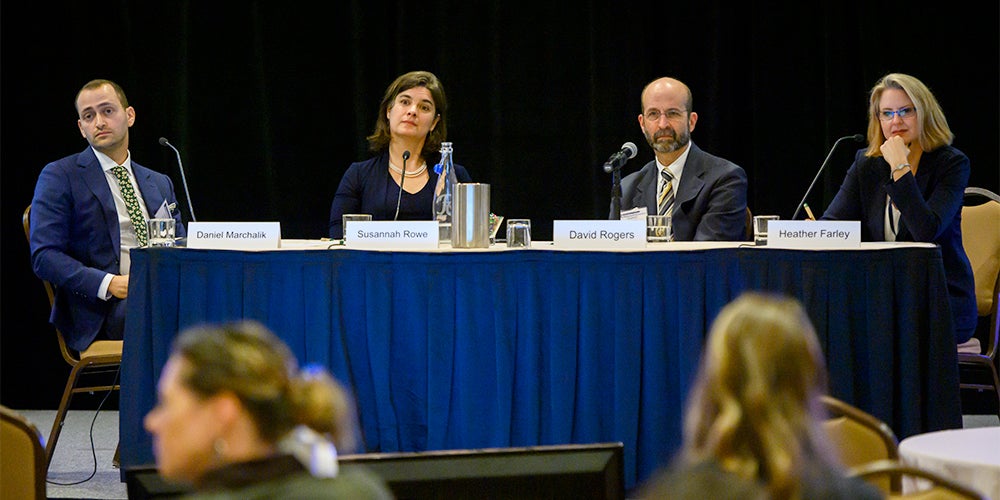
Posted in GUMC Stories | Tagged cura personalis, physician wellness, wellness
(November 3, 2019) — Participants in the closing plenary panel at the 2019 CENTILE Conference reflected on the progress that has been made in advancing the need to address physician and caregiver burnout since the 2017 conference.
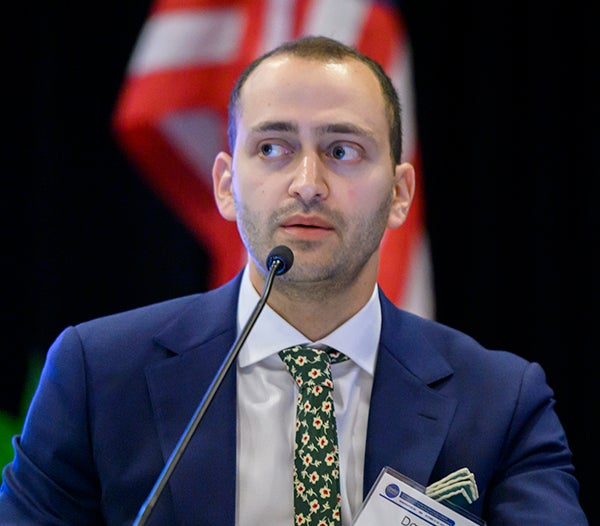
“Two years ago, we were here making the case for why burnout science matters,” said Daniel Marchalik, MD, MA, medical director for physician well-being at MedStar Health and director of the literature and medicine track at Georgetown University School of Medicine. “That is not the conversation we have anymore.”
The plenary followed three days of in-depth discussions and presentations by leading educators, researchers, practitioners, faculty leaders and academic policymakers on best practices to promote resilience, empathy and well-being across the health professions. Additional plenary lectures covered topics including architectural design for clinicians, culinary medicine, and the impact of bias, harassment and bullying on the learning and work environments while participants in panels, workshops and symposia addressed mind-body medicine, faculty resilience, literature and medicine, supporting underrepresented students in medical education and more.
About 200 registrants from several different countries participated in “Strategies to Promote the Well-Being of Health Professionals in the Learning and Work Environments,” October 27 to 30 at Georgetown University Hotel & Conference Center. MedStar Health and Georgetown co-sponsored this year’s conference.
Just four days before the conference started, the National Academy of Medicine published a report on the importance of addressing physician burnout and encouraging professional well-being. The report’s first two goals urged improvements in the work environment and learning environment — the exact goals of this year’s CENTILE Conference.
Aviad Haramati, PhD, director of CENTILE and co-chair of the conference planning committee, underscored the importance of the gathering. “The quality of the presentations was very high, and I was delighted that Georgetown University provided an excellent venue for networking and engagement on this vital aspect that impacts on learner and clinician chronic stress and burnout,” he said. “We are looking forward to having several of the best reports published in a special collection of articles in the journal Global Advances in Health and Medicine.”
Exploring the Role of Chief Wellness Officers
The closing plenary panel addressed what chief wellness officers do and how they fit within the structure of their organizations. Agreeing with Marchalik, Susannah Rowe, MD, MPH, associate chief medical officer for wellness and professional vitality at Boston Medical Center, said that the conversation around physician wellness has shifted.
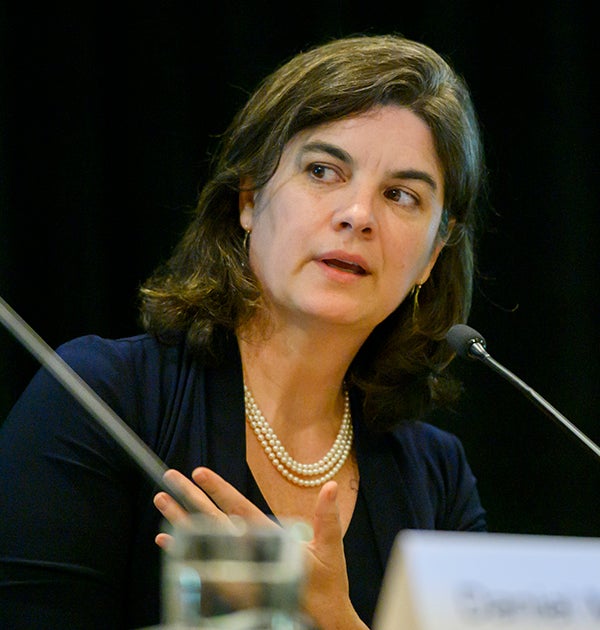
“The sea change over the last year or two has been the chair that comes to me and says, ‘Can you help do a program?’” Rowe said. “And now, they’re saying, ‘Can you look at my program? And what has worked nationally on this?’ and ‘I have this idea, what do you think about it and how can I measure the outcome?’ And they’re owning it. And to me, that’s success.”
Discussing the idea of every major health system having a chief wellness officer, Heather Farley, MD, MHCDS, FACEP, chief wellness officer at Christiana Health Care System in Newark, Del., pointed out that the title may mean different things depending on the organization.
“A chief wellness officer who only has four hours a week to work on this but you’ve called them chief wellness officer because your health system wants to say, we’ve checked that box, is very different than a health system that’s actually putting in a significant investment of resources,” Farley said. “So I think that we’re going to see more of these popping up, but are they truly supported and funded positions is another question.”
David Rogers, MD, MHPE, FACS, FAAP, medicine chief wellness officer at the University of Alabama at Birmingham School of Medicine, concurred. “The thing that I worry about locally, and maybe I need to be worried about nationally, is if the role doesn’t demonstrate measurable change for people, I think what it drives is more cynicism and despair,” he said.
Competing Constituencies and Responsibilities
Determining the appropriate constituencies for a chief wellness officer is critical to their success, the panelists explained. “When I was approached about the role, I said, ‘Do you want me to be the chief physician wellness officer, in which case a certain reporting structure makes sense,’” Rogers said. “‘Or do you want me to be the chief wellness officer, because if you’re going to hand me that title, then I have to be for wellness for everyone.’”
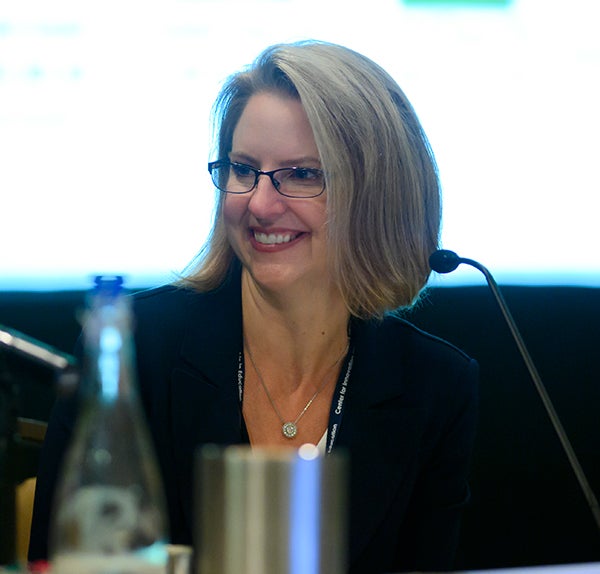
At first, Farley focused on wellness for physicians and advanced practice clinicians, but her role expanded over time to encompass all 12,000 employees in the health system. As she spent more time working on activities related to wellness, Farley found herself spending less time as a practicing clinician.
Rowe feels strongly about balancing her need to maintain a clinical practice while pursuing her work in wellness. “For me at least, being a surgeon and being a practicing clinician is important because I think it’s very easy to move very quickly away from the realities of what we’re dealing with,” she said.
Showing a Return on Investments in Wellness
The panelists also discussed what metrics they use to demonstrate a return on investments in wellness. While Rogers has encouraged his colleagues to look at retention rates, Farley described turnover as a lagging indicator that can be impacted by many different factors.
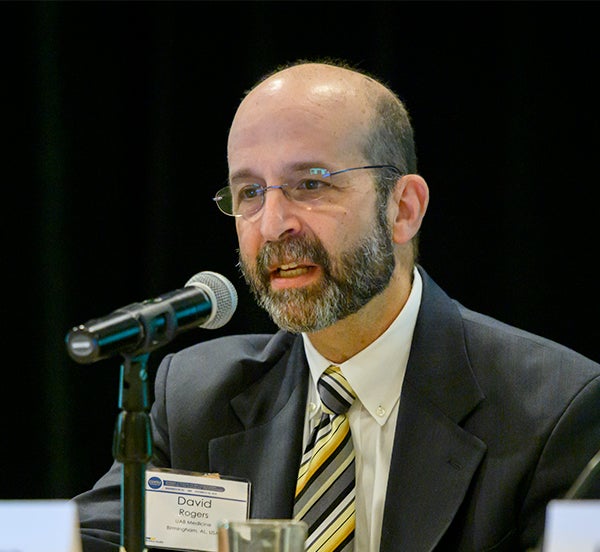
“I was actually blown away by my CFO’s reaction when I came in with all of this data and I had done all of these calculations of our actual health system’s cost due to physician turnover and he said, ‘Put that away, tell me about how this is actually affecting our caregivers,’” Farley said.
Part of the job of a chief wellness officer is advocating for the individuals within an organization, Rogers said. “Money is certainly important, particularly in academic medicine, because our social mission is so much bigger than any resources we’ll ever have,” he said. “But I think we have to be attentive to what we’re doing for the people that are doing the work.”
“One of the interesting realizations that I had starting out was, you think of these as competing agendas,” Rowe said. “There’s ‘let’s do well financially’ or ‘let’s take care of our people,’ but actually, I don’t think those are competing agendas if you do it right.”
Kat Zambon
GUMC Communications
